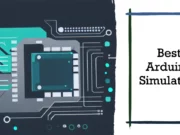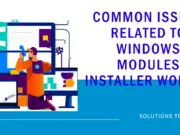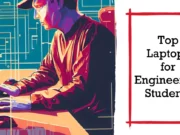Advancement in technology has significantly improved online learning. E-learning, like other sectors, has adopted technology both in teaching and learning.
Numerous technological media enable learners and teachers to communicate remotely without coming into physical contact. The media typically transmit information to learners in videos, texts, audio, and animations.
Technology affects society in several ways, but most importantly, it is improving their livelihoods. Manual work has almost become a thing of the past. This article will take you through several technological trends that should be embraced to promote online learning.
There is one new term that is particularly important in online learning, and this is online proctoring, which means invigilating. E-learning enables people to learn remotely as well as take their examinations remotely.
There is a need to check whether students cheat while they take tests at their locations. This kind of software is vital in detecting cheating while taking exams. Online proctoring has taken online learning to some great heights.
Audio
Audio records are popular online learning methods where you can record and save audible sounds in computers and other devices. You can save such audios and share them in several ways through the internet.
Learners and teachers can download webcasts and podcasts that aid in the learning process. Radios are another form of audio media device that learners have embraced.
You can stream radio programs and transmit them to distant places. Audios are particularly perfect for learners who understand more while listening than reading.
Video
On the other hand, Videos are the electronic medium for broadcasting, copying, and recording visual and moving images. Visual learners who understand more about seeing than listening or reading have an advantage with video learning.
Teachers and learners can use Youtube, webcams, web connections, and Skype to learn. Students tend to retain much of what they learn through video lessons compared to other methods of learning.
Webcams
A webcam is one of the cheapest virtual online learning platforms to install. A webcam is simply a video camera that transmits or streams its images in real-time through a computer network. One can save and view streaming videos or even send them.
Webcams help to establish links that allow computers to act like videoconferencing stations enabling students to learn. A webcam requires a universal serial bus cable to connect, unlike an internet protocol camera that requires a connection to the Ethernet.
To take learning to a new level, we need to embrace webcam technology for virtual learning. Virtual classrooms save learners and teachers time they require to commute, and space since the virtual classroom can hold an infinite number of learners.
Screencasting
Screencasting is also known as screen capture. To understand this term, look at how a screenshot works, and you will understand how a screen captures works. The only difference between the two-term is that a screencast is a video that shows various changes taking place on the computer screen over time, which has narrations.
A screencast is vital when it comes to demonstrating and solving problems in a step by step manner. Screencasting enables viewers to stream videos directly from the user’s browsers and screens.
Blogging
A blog is an information platform hosted on the world wide web where people interact with each other regardless of their locations. Blogs are interactive because visitors comment and text one another, unlike other websites which are static.
Blogging enables learners and teachers to share ideas on various topics, which is vital for online learning. No thoughts are limited in blogging.
Virtual reality
Virtual reality is a form of computer technology that makes use of virtual reality headsets in conjunction with physical environments creating realistic images and sounds that elevates the user’s presence in an ideal environment.
The medical field learning is the largest beneficiary of virtual reality technology. Virtual reality can take learners to any part of the world in a blink of an eye with a spectacular environment for leaning.
Virtual reality is not only suitable for gaming and sports, but students prefer it than perusing book pages trying to memorize notes. Though incorporating virtual reality in online learning can be capital intensive, it has more advantages than you may think.
Machine learning
Machine learning is almost a new term to many, but this is simply a computer science field whereby computers can learn without someone programming the computer.
Machine learning can offer custom online learning solutions depending on the student’s previous learning objectives and performance. Machine learning ensures even distribution of resources to learners since they get information that matches their knowledge requirements.
Wearable devices
Wearable devices are electronic gadgets usually worn on the body as implants. These implants are excellent learning tools since they can virtually deliver training at any place. Wearable devices are perfect for simulations and make learning exciting and easy to understand.
Artificial intelligence
Artificial intelligence is intelligence that machines display while human intelligence is intelligence that human and other living creatures like primates possess.
Artificial intelligence comes in handy in online learning because it can detect areas that learners need to improve, and those who are substantial. Artificial intelligence can create more practical solutions to problems compared to conventional classrooms.
Virtual and remote laboratories
Virtual laboratories are simply web applications that resemble physical laboratories. Students do not need to access real laboratories to perform experiments but can launch remote laboratories anywhere with the right tools.
Learners have a chance of experimenting with safe web applications before using real laboratory devices, which can be dangerous for new learners. Students who use remote laboratories before using the real ones are more courageous and perform better since they train with a virtual environment first and do not fear to make errors.
Final thoughts
There are countless advantages of taking online classes, you save on commuter expenses that you would otherwise spend attending courses. The other benefit is that you do not need to meet your teacher, who works well for shy students.
Though online learning can be expensive in terms of investment in technology, we need to move with time lest time will leave us behind. Therefore, it is recommended that you learn and adopt some of the above E-learning techniques to fit in the job market.



























